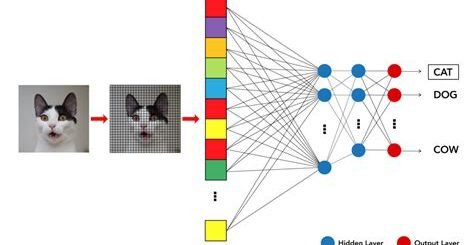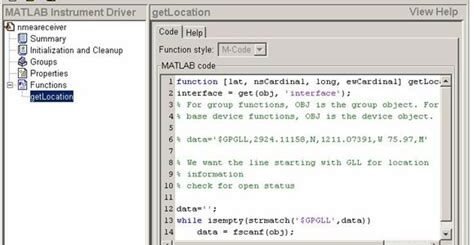Real-Time Data Processing with Matlab
In the rapidly evolving digital age, the need for real-time data processing has become increasingly essential for businesses and organizations. Real-time data processing allows for the analysis and utilization of data as it is generated, enabling timely decision-making and action. In this blog post, we will delve into the world of real-time data processing with a focus on utilizing Matlab, a powerful and versatile technical computing tool.
We will start with an introduction to real-time data processing and its significance in today’s data-driven world. Then, we will explore the various tools and techniques available for real-time data processing in Matlab, highlighting its capabilities and advantages. Furthermore, we will examine the practical applications of real-time data processing in Matlab across different industries.
Additionally, we will address the challenges and limitations that may arise when using Matlab for real-time data processing, and provide best practices to overcome these obstacles. By the end of this post, you will have a comprehensive understanding of real-time data processing with Matlab and how to effectively leverage it for your specific needs.
Introduction to Real-Time Data Processing
Real-time data processing refers to the method of processing data as soon as it is produced, rather than storing it for later processing. This enables the immediate analysis and use of data, allowing for quick decision-making and response in various applications.
Real-time data processing is crucial in fields such as finance, healthcare, telecommunications, and industrial automation, where time-sensitive information and actions are required. With the increasing volume and velocity of data being generated, the need for real-time data processing has become more important than ever.
Real-time data processing requires efficient tools and techniques to handle and analyze data streams. These tools must be capable of processing data with low latency and high throughput, ensuring that the data is processed and analyzed in real-time.
Overall, real-time data processing plays a vital role in modern data-driven applications, providing timely insights and enabling rapid decision-making based on the most up-to-date information.
Tools and Techniques for Real-Time Data Processing
Real-time data processing is essential in today’s fast-paced world where quick decision-making and analysis are crucial. There are various tools and techniques available for real-time data processing that can help organizations effectively manage and analyze large volumes of data in real-time. One such tool is Apache Kafka, which is an open-source stream-processing software platform that is designed for high-throughput, fault-tolerant, and low-latency data delivery. Another popular tool is Apache Storm, a distributed real-time computation system that’s used for processing large volumes of data. These tools provide the necessary infrastructure and capabilities to process data in real-time, enabling organizations to make informed decisions swiftly.
Furthermore, techniques such as stream processing and complex event processing (CEP) are widely used for real-time data processing. Stream processing involves the continuous processing of data streams to gain meaningful insights and make real-time decisions. CEP, on the other hand, allows organizations to identify patterns and relationships within large volumes of data in real time, enabling them to detect and respond to critical events as they occur.
In addition to tools and techniques, real-time data processing also requires the use of advanced analytics and machine learning algorithms to extract valuable insights from the data. These algorithms can process data in real-time, analyze patterns, and make predictions based on the incoming data streams. By leveraging these advanced technologies, organizations can gain a competitive edge and improve their decision-making process.
Overall, the tools and techniques for real-time data processing play a crucial role in enabling organizations to effectively manage and analyze data in real-time. With the right tools and techniques in place, organizations can harness the power of real-time data processing to drive innovation, improve operational efficiency, and gain valuable insights that can lead to business success.
Applications of Real-Time Data Processing in Matlab
Real-time data processing in Matlab has a wide range of applications across various industries. One of the main applications is in the field of finance, where Matlab is used for real-time analysis and processing of financial market data. This allows for quick decision-making and timely execution of trades based on real-time market conditions.
Another important application of real-time data processing in Matlab is in the field of telecommunications. Matlab is used to process real-time data from communication systems, such as signal processing for mobile phones, to ensure efficient and reliable communication.
Furthermore, Matlab is widely used in the field of image processing and computer vision for real-time analysis of visual data. This is essential in applications such as autonomous vehicles, surveillance systems, and medical imaging, where real-time processing of visual data is crucial.
Additionally, Matlab is utilized in real-time data processing for control and automation systems, such as in robotics and industrial automation. It enables real-time monitoring and control of systems, ensuring optimal performance and safety.
Challenges and Limitations in Real-Time Data Processing with Matlab
Real-time data processing with Matlab presents a number of challenges and limitations that researchers and engineers must consider when working with this powerful tool. One of the main challenges is the need for high computational power and memory to process real-time data efficiently. In some cases, the sheer volume of data being processed in real-time can overwhelm the capabilities of the hardware, leading to delays and inaccurate results.
Another limitation of real-time data processing with Matlab is the complexity of the algorithms and models required to process data in real-time. Developing and implementing these algorithms can be time-consuming and require a deep understanding of mathematical concepts and programming languages.
In addition, real-time data processing with Matlab can be limited by the availability of real-time data sources. In some cases, accessing and integrating real-time data streams can be challenging, especially when dealing with diverse sources and formats.
Furthermore, the real-time nature of the data being processed can introduce challenges related to data quality and accuracy. Ensuring that the data is reliable and up-to-date can be a significant hurdle, especially when dealing with dynamic and rapidly changing data sets.
Best Practices for Real-Time Data Processing in Matlab
When it comes to real-time data processing in Matlab, there are several best practices that can help ensure the efficiency and accuracy of the process. One of the most important practices is to optimize your code for performance. This may involve using vectorized operations and avoiding unnecessary loops, as well as taking advantage of Matlab’s built-in functions for numerical computation.
It is also essential to carefully manage memory usage in real-time data processing. This can be achieved by pre-allocating memory for arrays and avoiding excessive copying of data. Additionally, it’s important to monitor the memory usage of your program to identify any potential memory leaks or inefficiencies.
Another best practice is to use reliable and well-tested libraries and toolboxes for real-time data processing in Matlab. This can help ensure the stability and accuracy of your computations, as well as save you time and effort in writing and debugging code from scratch.
Lastly, it’s important to consider the scalability and maintainability of your real-time data processing code. This involves creating modular and reusable code, as well as documenting your code and following best practices for software engineering.


